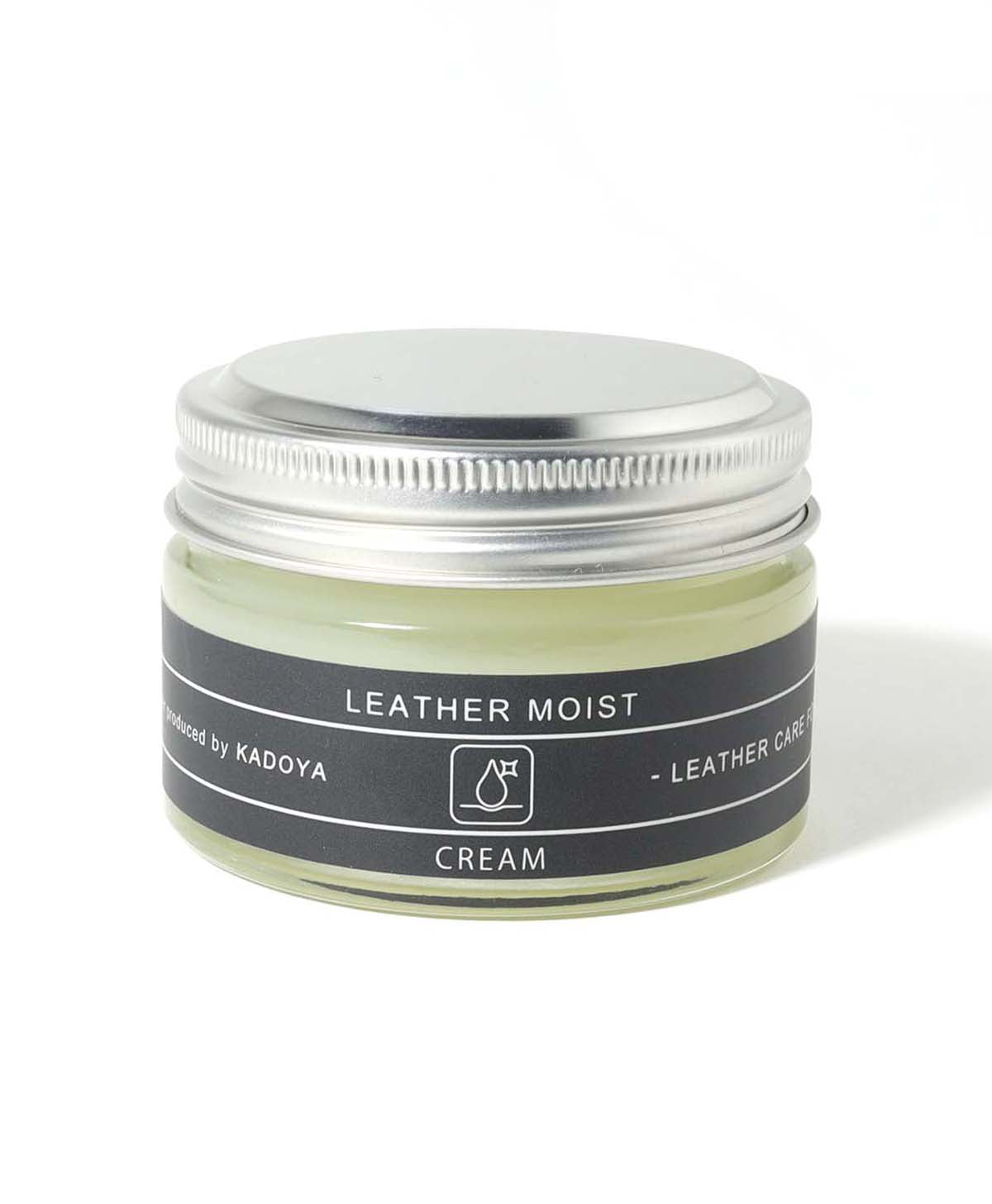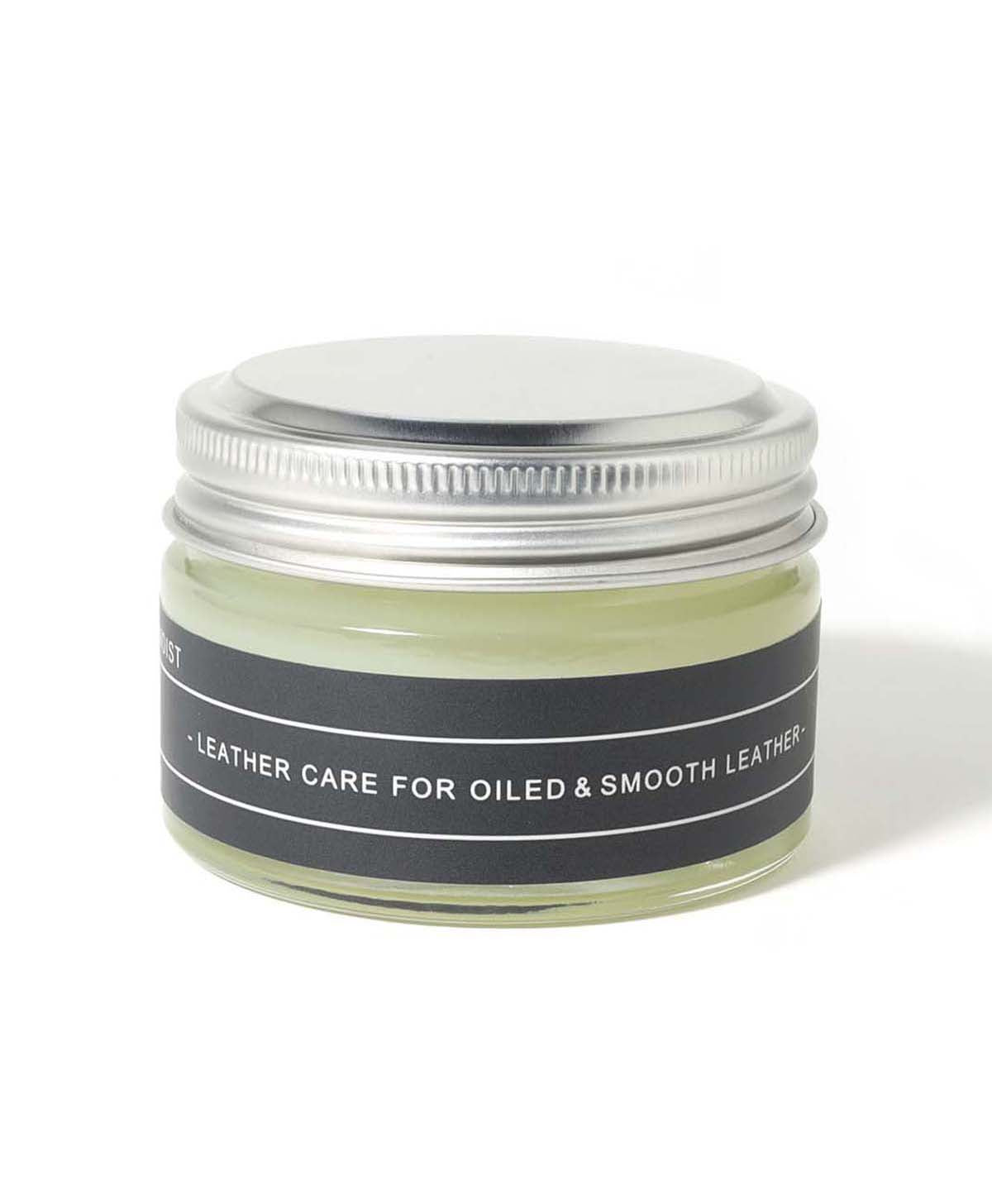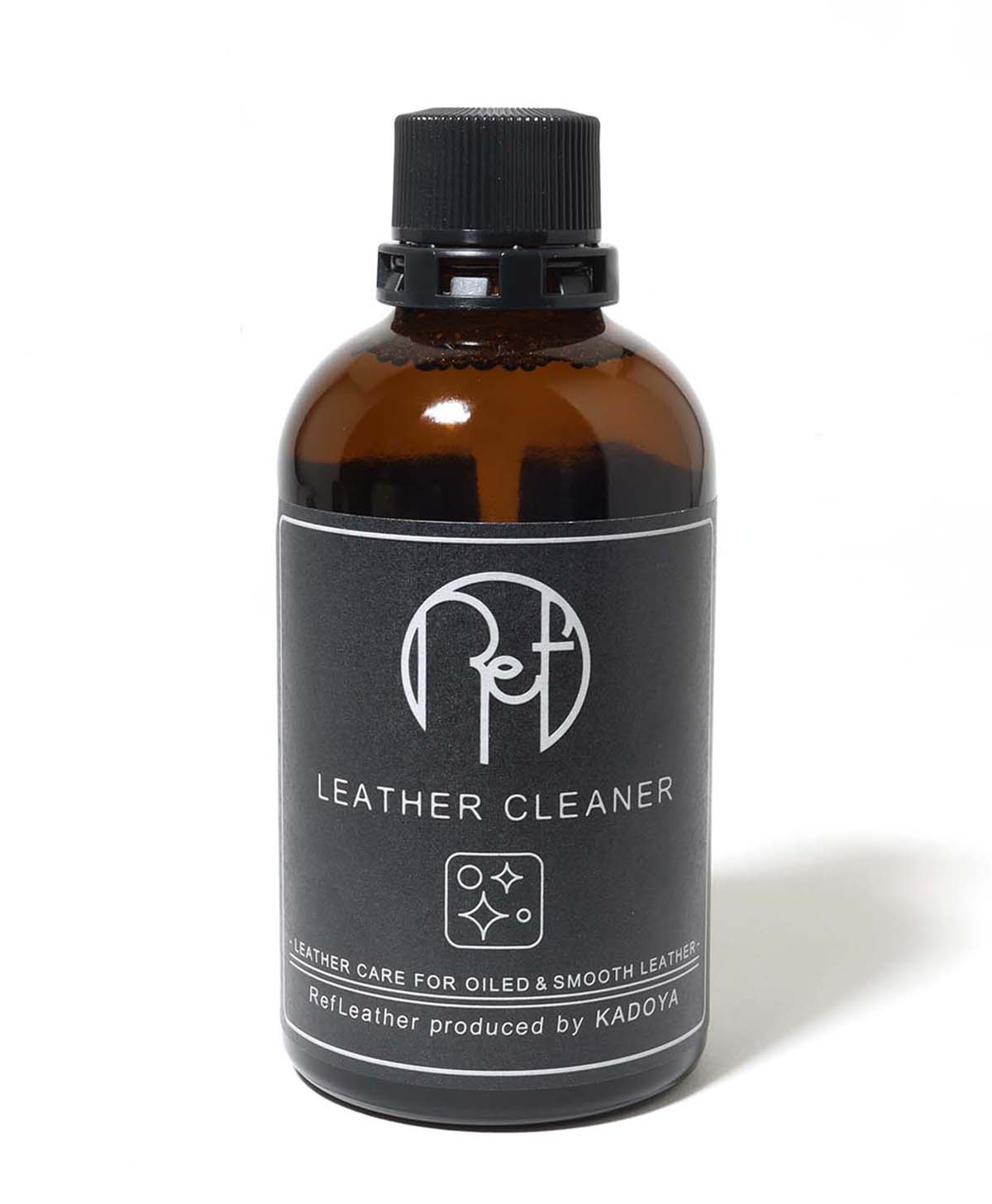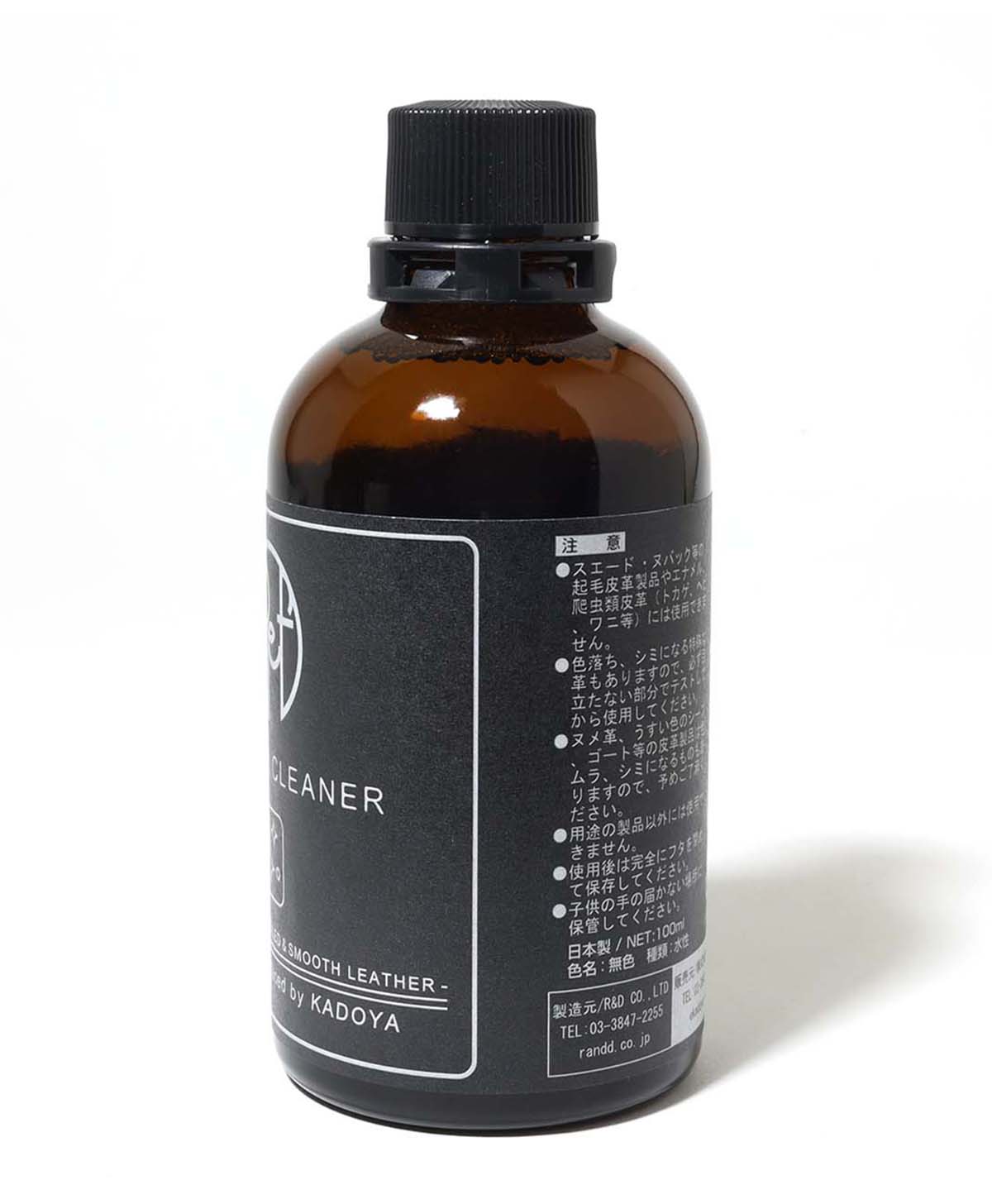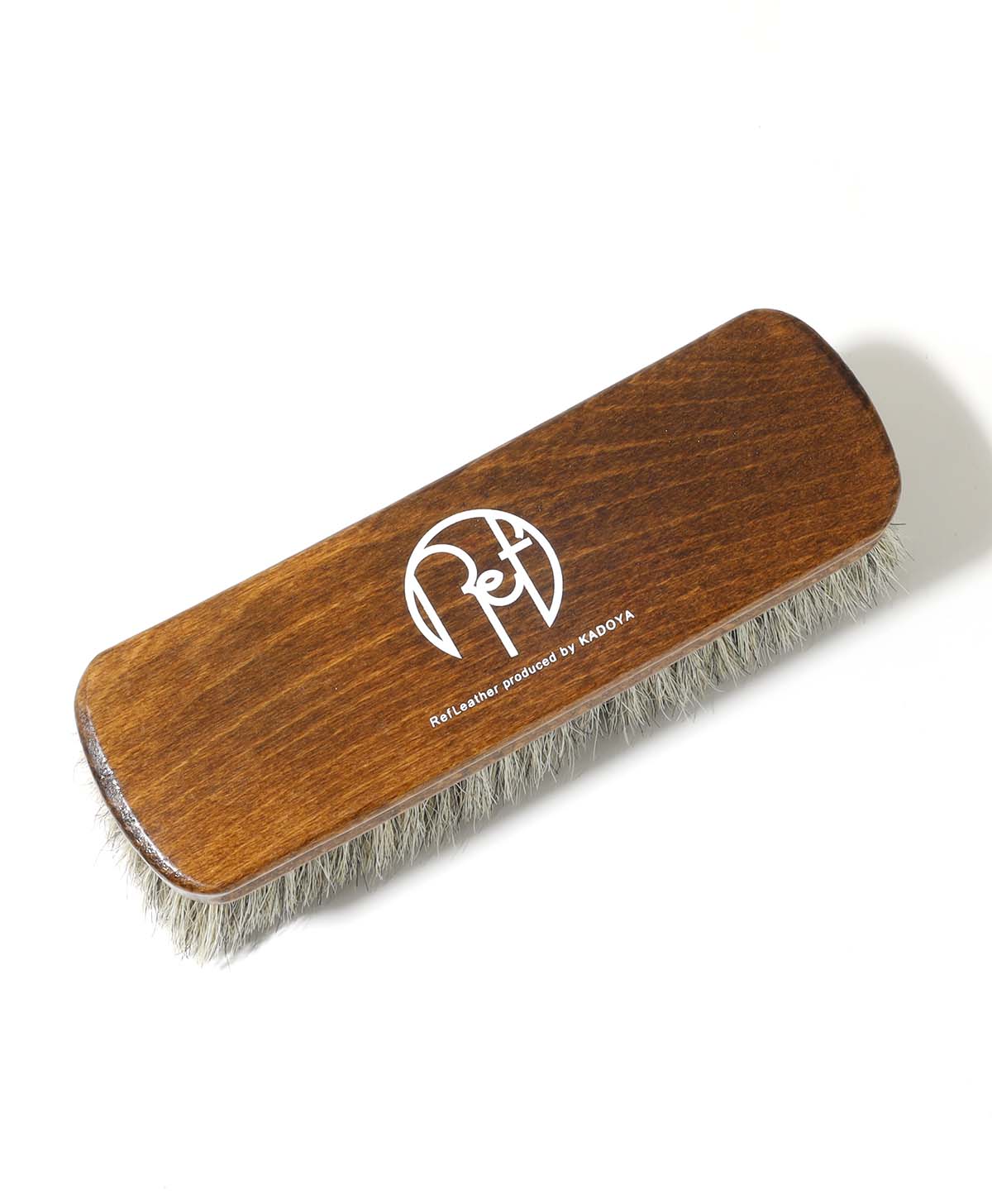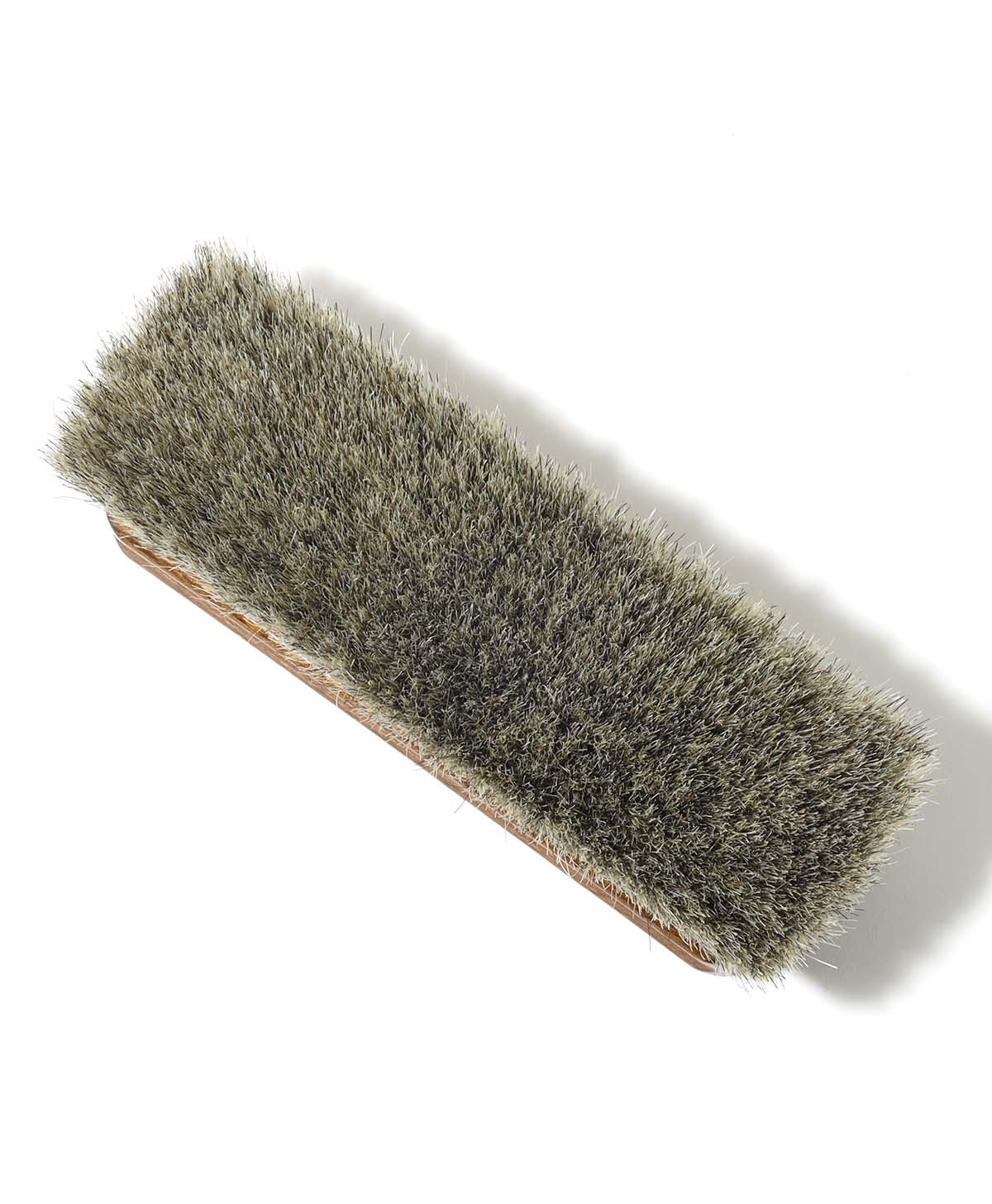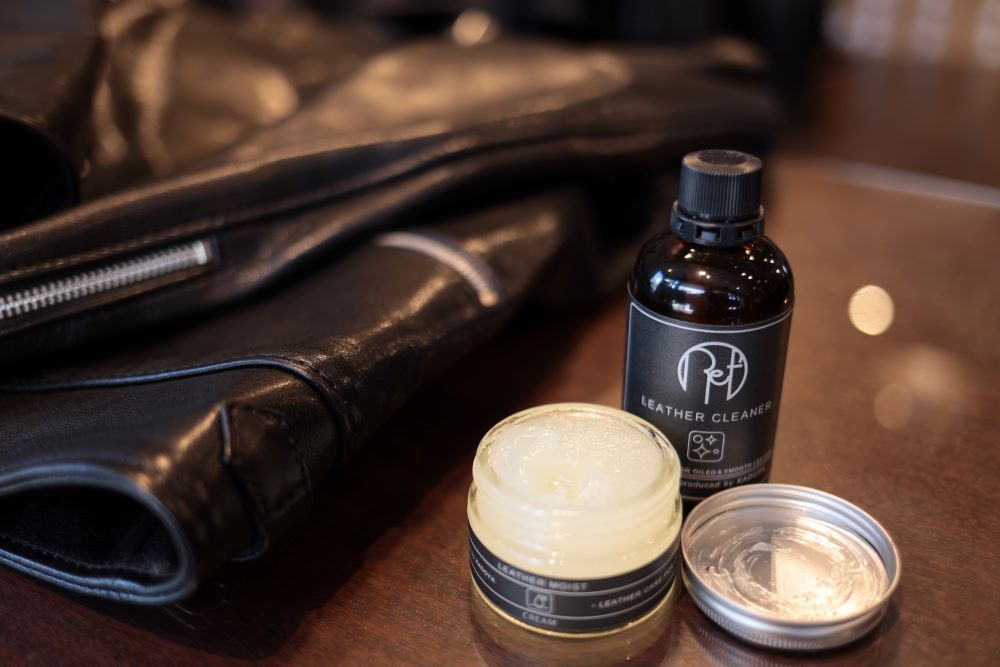
Leather Maintenance
When you hear about maintaining leather, it sounds like a lot of work, and difficult to do it yourself. If you make a mistake, it could get stained, so you might as well give up.
It would be best to leave it to the professionals, but if you are attached to your bike and want to maintain it yourself, why not try the basic maintenance methods we will introduce below?
1. Brushing

Basically, you should brush your jacket after wearing it, regardless of the season. Simply removing dust and debris trapped between the seams can greatly prevent mold growth. If you oil your jacket when it is clogged with debris, it will only trap the debris inside, so first brush away the dust and debris.
②Removing dirt

If you find dirt that does not come off with brushing, wipe it off with a tightly wrung wet towel. Be careful not to rub too hard, as this can scrape off the silver surface or change the texture. If it does not come off with water, try using lukewarm water and a leather cleaner. It is a good idea to test it in an area that is not visible beforehand to make sure it will not stain.
③Oil up

Now that we've come this far, it's finally time to oil it. For normal maintenance, there is no problem if you finish with steps ① and ②. Applying too much oil can encourage the growth of mold.
Leather gets very oily and sweaty in the summer. We recommend wiping it off with a wet towel after wearing, especially around the neck and cuffs, which are areas that come into direct contact with the leather. The salt in sweat can cause the leather to deteriorate and crack, so be careful. After wiping it off, dry it thoroughly with a fan or circulator. Please note that if you blow hot air directly on the leather, it may shrink.
For the lining (including mesh), it is also effective to wipe it with a wet towel. If possible, turn the jacket inside out and wipe it down.

You can also use the same method to wipe off any bugs that may have attached themselves to your bike after a ride. Be careful, though, as leaving them for too long can cause their body fluids to seep in and become difficult to remove.
The basic process is the same for perforated leather, but if you use a paste-like oil when oiling, spread it thinly and allow it to penetrate, taking care not to get the oil clogging the punched holes.
Leather maintenance is a complex subject, and to take it to the extreme, even if you continue to perform the same maintenance on two jackets made of the same leather, the results of the maintenance may be different. Why not take the time to carefully care for your leather and let it grow?
